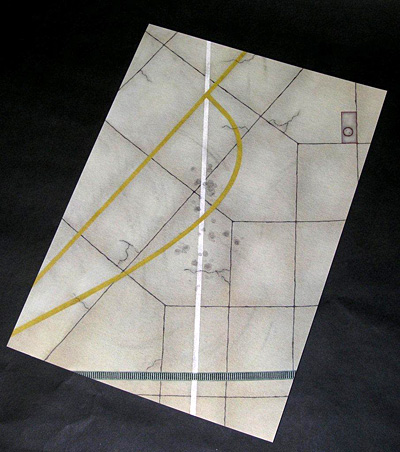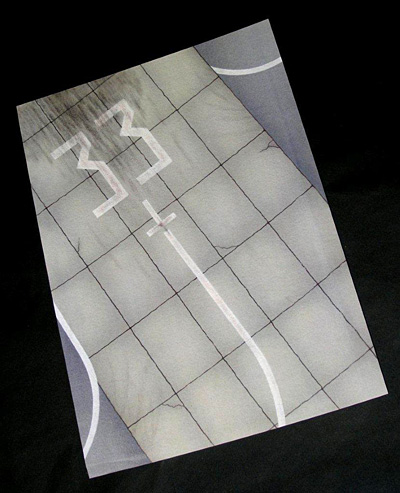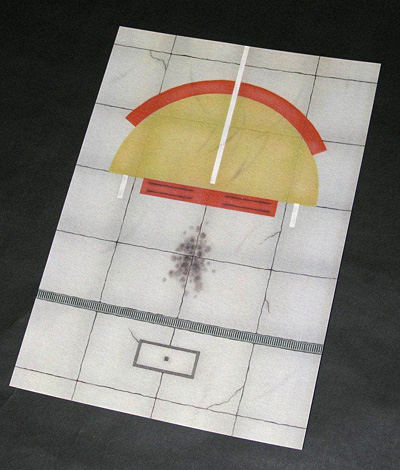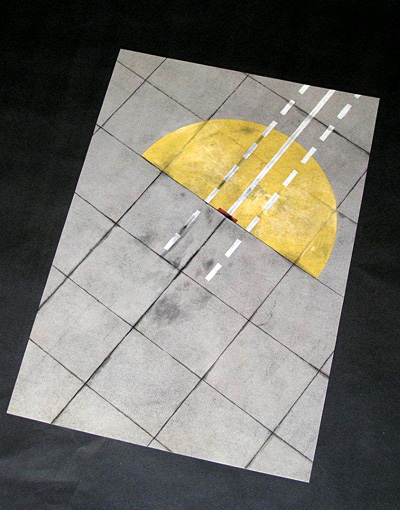
Miliscale item 72-010-101 Taxiing: item represents the taxiway upon which the IAF F-16s roll to and from the runway. It displays all the details of the original: white line on which the aircraft rolls, the yellow line for the towing vehicle, the metal drainage grid, concrete cover with red edges and the ever-present cracks and oil stains. The unique pattern of the expansion lines is captured well.
Approximate dimensions (these may vary depending upon the print versions): length: 30.5cm (12 ins), width: 21.5cm (8.46ins).
This item is also available in 1:48 scale (48-010-101). Approximate dimensions: length39cm (15.35ins); width: 28cm (11ins).

Miliscale item 72-010-102 Runway 33: item represents the concrete runway (yes, concrete, not asphalt) typical of IAF airbases throughout the 1970s, the 1973 Yom Kippur war included.
1:48 scale (48-010-102)

Miliscale item 72-010-103 Running In: item represents the concrete surface used for the engine run-in process of the F-16. The yellow half circle represents the security area of the air intake, and the black rectangle with the centre large dot inside it is the anchorage point for the aircraft’s arrestor hook. Note that the arrestor hook is not fixed directly to the centre point, but rather to a lever arm protruding from it.
1:48 scale (48-010-103)

Miliscale item 72-010-104 HAS: Item represents the concrete surface found inside the Hardened Aircraft Shelters for the F-16. Tone of concrete is darkened here, as the surface is never exposed to direct sunlight. The familiar yellow half circle marks the security area of the intake, and the dotted white lines and solid white line are the paths of the main undercarriage and the nose wheel respectively.
1:48 scale (48-010-104)
Verdict…
Really very nice and definitely recommended. These bases will have considerable appeal to many aircraft scale modellers, those both interested in 1:72 and 1:48 scale Israeli subjects. Clearly Runway 33 especially isn’t confined to IAF displays and could be used for many aircraft subjects.
Attaching the card bases to a hard, wooden or other firm board will be easy and straightforward using PVA or other suitable adhesive. The card does have a slight sheen to it and some of you may want to ‘ghost’ on a thin flat varnish once the card is secured to its board and fully dry, just to create a more authentic flat finish? Those older modellers of you out there will remember the Verlinden bases that were similarly produced. I haven’t seen those for a long time, and these new versions are most welcome.
Geoff C.
